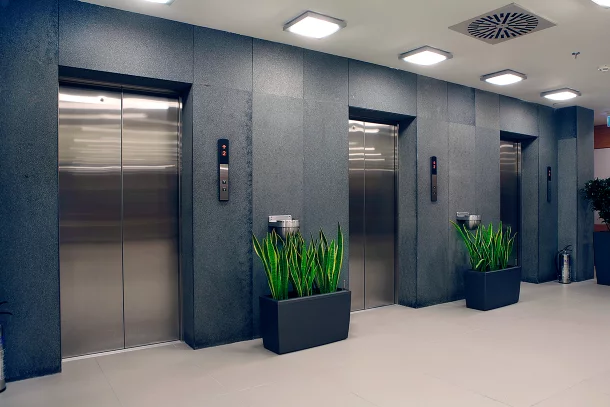We Maintain Lifts with Accuracy: Ensuring Security and Efficiency
We Maintain Lifts with Accuracy: Ensuring Security and Efficiency
Blog Article
Diving Into the Globe of Elevators: Common Problems Dealt With by Various Lift Systems
As we browse via the upright transportation systems of contemporary structures, lifts stand out as an essential element of our lives. However, behind their seamless operation lies a world of detailed systems that can often come across difficulties. From hydraulic elevators to grip systems and machine-room-less designs, each lift kind includes its collection of common problems. Understanding these obstacles is crucial for making sure the smooth functioning of these crucial systems. Let's explore the complexities that underlie the operation of lifts and the possible concerns that can occur, shedding light on the intricate internet of lift systems.
Hydraulic Lifts
Hydraulic lifts, typically favored for low-rise structures, use fluid stress to control the motion of the lift car (lift repair companies). This system entails a hydraulic pump pushing oil into a cyndrical tube, creating the elevator to relocate the preferred instructions. While hydraulic lifts are recognized for their smooth and peaceful operation, they do come with their own collection of common problems
One common issue with hydraulic lifts is oil leakage. In addition, concerns with the control system, such as faulty shutoffs or a malfunctioning pump, can create interruptions in the elevator's motion.
Routine upkeep and timely repair work are essential to ensure the smooth performance of hydraulic lifts. By dealing with these typical concerns proactively, building proprietors can lessen downtime and guarantee the safety and security and effectiveness of their vertical transport system.
Traction Lifts
When taking into consideration upright transport systems in structures, another typical type besides hydraulic lifts is the traction lift. Traction elevators operate using a system of ropes and weights that relocate the lift car by gripping onto the hoist ropes. This mechanism enables for smoother and quicker vertical transport contrasted to hydraulic systems.
One of the typical problems faced by grip lifts is rope wear. The constant motion of the ropes within the traction system can cause tear and put on gradually, potentially triggering the elevator to malfunction or become harmful for usage. Regular assessments and upkeep of the ropes are crucial to make sure the lift's correct performance and safety.
Another concern that grip lifts may run into is associated to the control system. Issues with the control system can cause issues such as unpredictable activity, delays in response times, or also full closures. Regular screening and maintenance of the control system are critical to stop such issues and guarantee the lift's integrity.
Machine-Room-Less (MRL) Elevators

Among the crucial parts of MRL lifts is the small gearless grip device that is mounted within the hoistway. This equipment successfully drives pop over here the lift vehicle without the demand for large tools discovered in typical traction lifts. In addition, MRL lifts normally utilize a counterweight system to balance the auto, further improving their energy effectiveness.
Regardless of their advantages, MRL elevators may deal with challenges associated to repair and maintenance as a result of the confined area for equipment installment. Availability for servicing elements within the shaft can be limited, calling for specialized training for specialists. Proper maintenance routines and normal evaluations are crucial to make sure the ongoing smooth procedure of MRL lifts.
Overloading and Weight Limit Issues
Overwhelming and weight restriction issues are critical problems in lift procedures. Lift producers style raises with certain weight abilities to guarantee guest security and devices longevity.
When lifts are overloaded, it places too much strain on the motor, cables, and various other parts, potentially creating break downs or breakdowns. If they spot excess weight, safety mechanisms such as sensing units and overload sensors are in location to prevent lifts from moving. Additionally, going beyond weight restrictions can cause boosted power usage and deterioration on the lift system.
To reduce overloading problems, developing managers should plainly display weight restrictions in elevators and inform owners on the significance of adhering to these restrictions Look At This - lift repair companies. Routine maintenance checks by qualified professionals can additionally help ensure that lifts are operating within risk-free weight criteria. By addressing overloading and weight limit issues proactively, structure proprietors can boost elevator safety and efficiency
Electrical System Failings
Exceeding weight limits in lifts can not only lead to mechanical concerns however additionally potentially add to electric system failings within the lift facilities. Electrical system failings are an important problem in lift operation, as they can cause unforeseen shutdowns, malfunctions, and even safety threats. One usual electric concern is the getting too hot of parts as a result of too much current flow created by overwhelming the lift beyond its capacity. This can bring about harm to the control, electrical wiring, or motor systems, causing costly repair services and downtime.
Normal upkeep and examinations are essential to recognize and attend to possible electrical problems quickly, guaranteeing the safe and reliable procedure of lift systems. By adhering to weight limits and conducting routine electrical system checks, structure proprietors can mitigate the threat of electric failings in elevators.
Final Thought

Hydraulic lifts, often favored for low-rise buildings, make use of fluid pressure to manage the movement of the lift vehicle.When thinking about vertical transport systems in structures, one more common kind apart from hydraulic elevators is the traction lift. Grip lifts run making use of a system of ropes and counterweights that move the elevator auto by gripping onto the hoist ropes. Unlike conventional lifts that require a separate machine area to house the equipment, MRL elevators integrate many of the components within the shaft, go to these guys removing the requirement for a devoted equipment area.In verdict, lifts encounter usual issues such as hydraulic malfunctions, traction system failings, and electrical system troubles.
Report this page